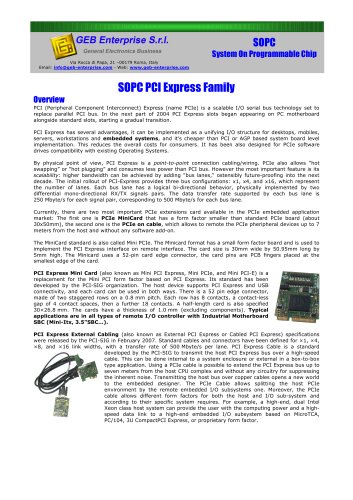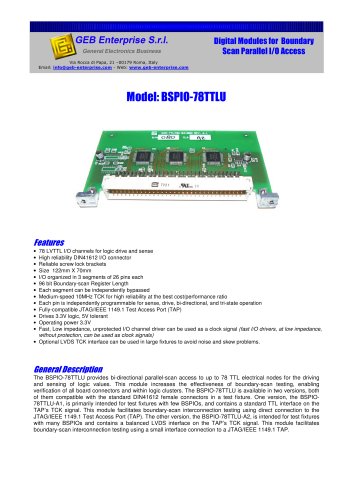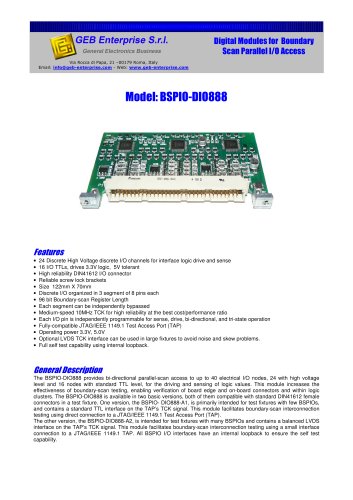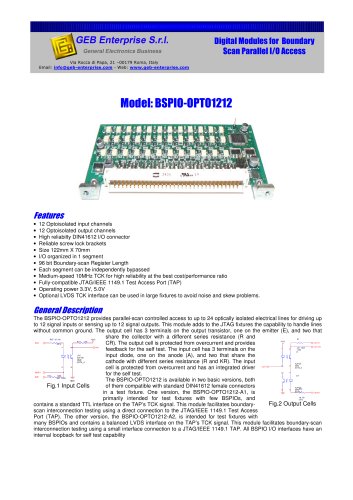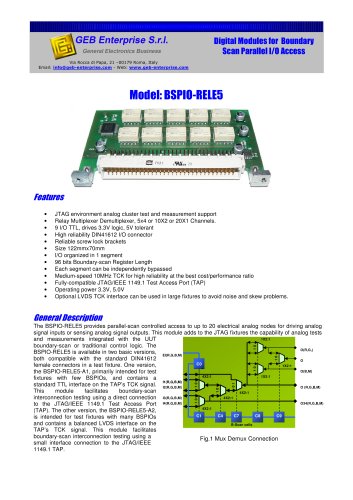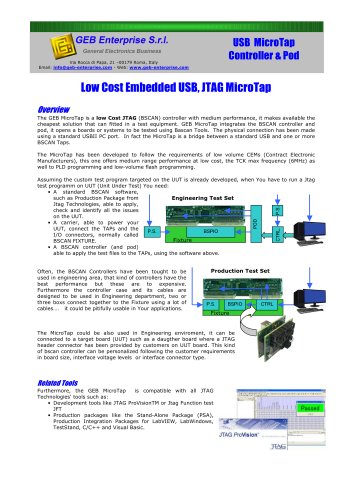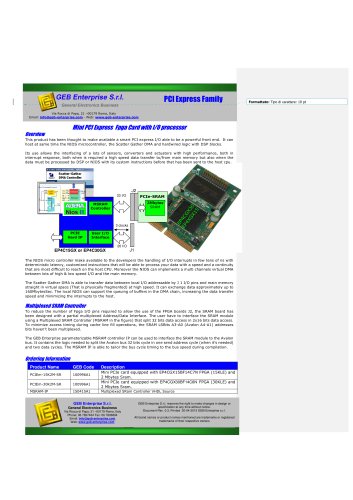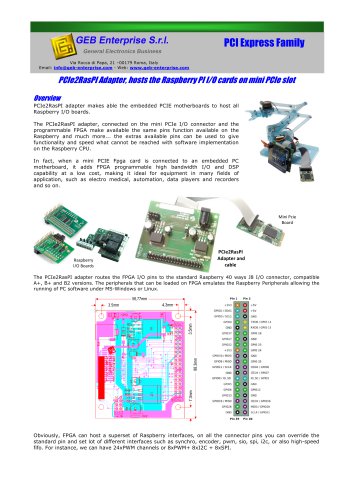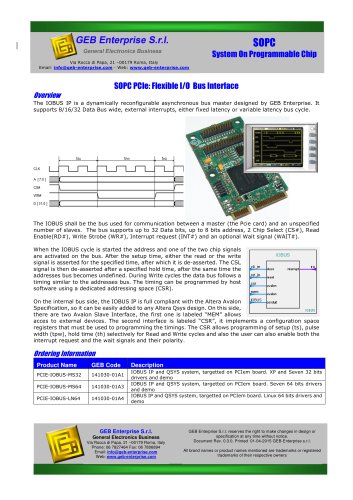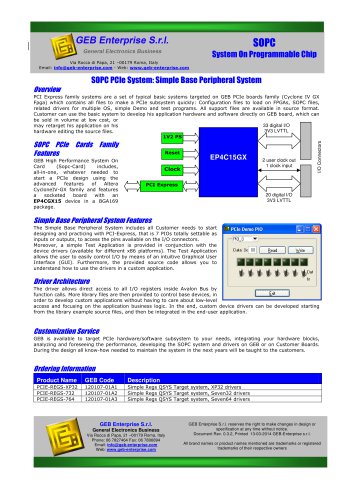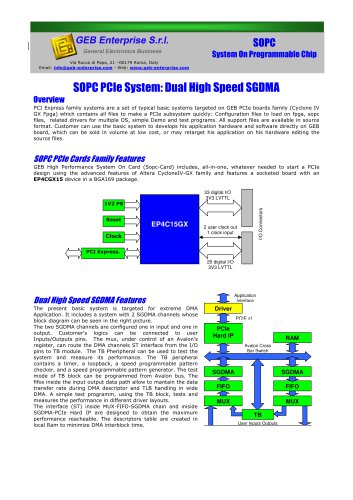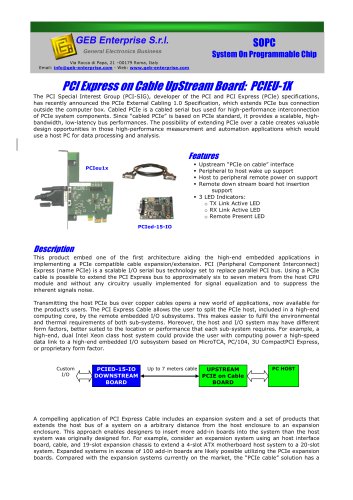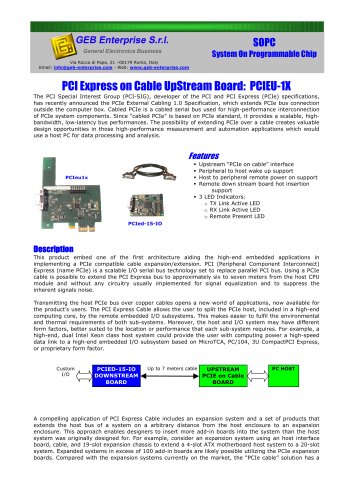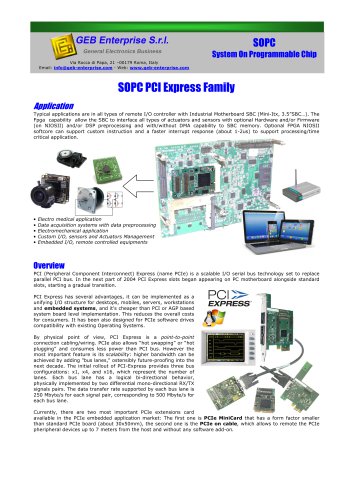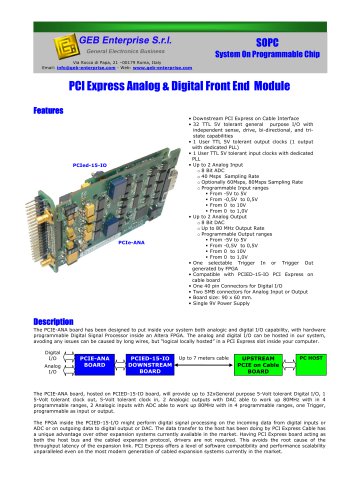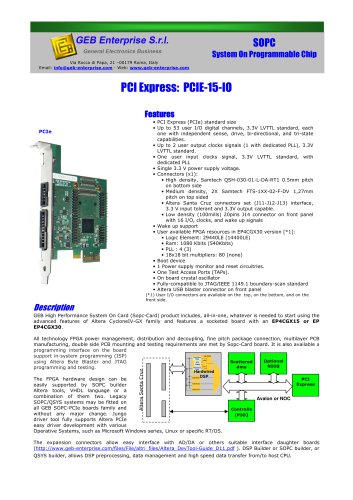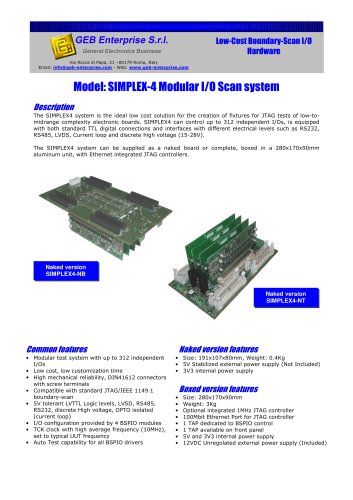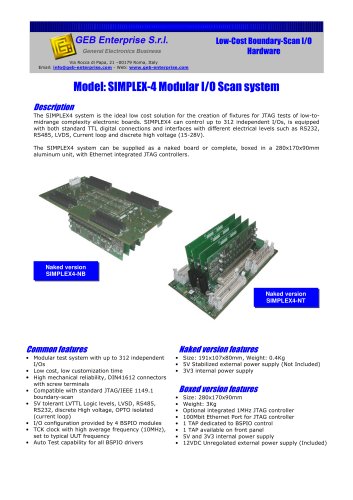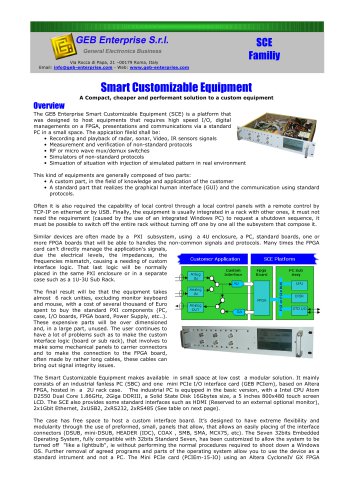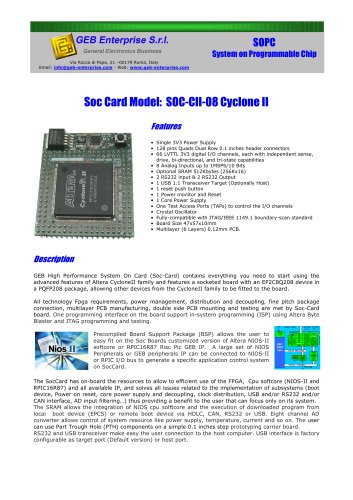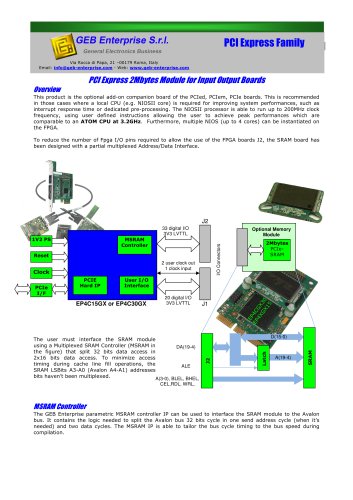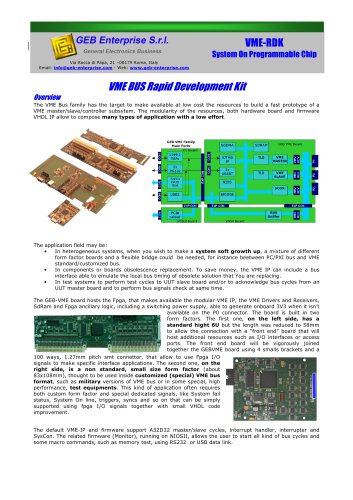PCI Express Rapid Development Kit0 pages
SOPC
System On Programmable Chip
Via Rocca di Papa, 21 –00179 Roma, Italy
Email: info@geb-enterprise.com - Web: www.geb-enterprise.com
SOPC PCI Express Family
Overview
PCI (Peripheral Component Interconnect) Express (name PCIe) is a scalable I/O serial bus technology set to
replace parallel PCI bus. In the next part of 2004 PCI Express slots began appearing on PC motherboard
alongside standard slots, starting a gradual transition.
PCI Express has several advantages, it can be implemented as a unifying I/O structure for desktops, mobiles,
servers, workstations and embedded systems, and it's cheaper than PCI or AGP based system board level
implementation. This reduces the overall costs for consumers. It has been also designed for PCIe software
drives compatibility with existing Operating Systems.
By physical point of view, PCI Express is a point-to-point connection cabling/wiring. PCIe also allows “hot
swapping” or “hot plugging” and consumes less power than PCI bus. However the most important feature is its
scalability: higher bandwidth can be achieved by adding "bus lanes," ostensibly future-proofing into the next
decade. The initial rollout of PCI-Express provides three bus configurations: x1, x4, and x16, which represent
the number of lanes. Each bus lane has a logical bi-directional behavior, physically implemented by two
differential mono-directional RX/TX signals pairs. The data transfer rate supported by each bus lane is
250 Mbyte/s for each signal pair, corresponding to 500 Mbyte/s for each bus lane.
Currently, there are two most important PCIe extensions card available in the PCIe embedded application
market: The first one is PCIe MiniCard that has a form factor smaller than standard PCIe board (about
30x50mm), the second one is the PCIe on cable, which allows to remote the PCIe pheripheral devices up to 7
meters from the host and without any software add-on.
The MiniCard standard is also called Mini PCIe. The Minicard format has a small form factor board and is used to
implement the PCI Express interface on remote interface. The card size is 30mm wide by 50.95mm long by
5mm high. The Minicard uses a 52-pin card edge connector, the card pins are PCB fingers placed at the
smallest edge of the card.
PCI Express Mini Card (also known as Mini PCI Express, Mini PCIe, and Mini PCI-E) is a
replacement for the Mini PCI form factor based on PCI Express. Its standard has been
developed by the PCI-SIG organization. The host device supports PCI Express and USB
connectivity, and each card can be used in both ways. There is a 52 pin edge connector,
made of two staggered rows on a 0.8 mm pitch. Each row has 8 contacts, a contact-less
gap of 4 contact spaces, then a further 18 contacts. A half-length card is also specified
30×26.8 mm. The cards have a thickness of 1.0 mm (excluding components). Typical
applications are in all types of remote I/O controller with Industrial Motherboard
SBC (Mini-Itx, 3.5”SBC…).
PCI Express External Cabling (also known as External PCI Express or Cabled PCI Express) specifications
were released by the PCI-SIG in February 2007. Standard cables and connectors have been defined for ×1, ×4,
×8, and ×16 link widths, with a transfer rate of 500 Mbyte/s per lane. PCI Express Cable is a standard
developed by the PCI-SIG to transmit the host PCI Express bus over a high-speed
cable. This can be done internal to a system enclosure or external in a box-to-box
type application. Using a PCIe cable is possible to extend the PCI Express bus up to
seven meters from the host CPU complex and without any circuitry for suppressing
the inherent noise. Transmitting the host bus over copper cables opens a new world
to the embedded designer. The PCIe Cable allows splitting the host PCIe
environment by the remote embedded I/O subsystems one. Moreover, the PCIe
cable allows different form factors for both the host and I/O sub-system and
according to their specific system requires. For example, a high-end, dual Intel
Xeon class host system can provide the user with the computing power and a highspeed data link to a high-end embedded I/O subsystem based on MicroTCA,
PC/104, 3U CompactPCI Express, or proprietary form factor.

 عضویت
عضویت  ورود اعضا
ورود اعضا راهنمای خرید
راهنمای خرید







